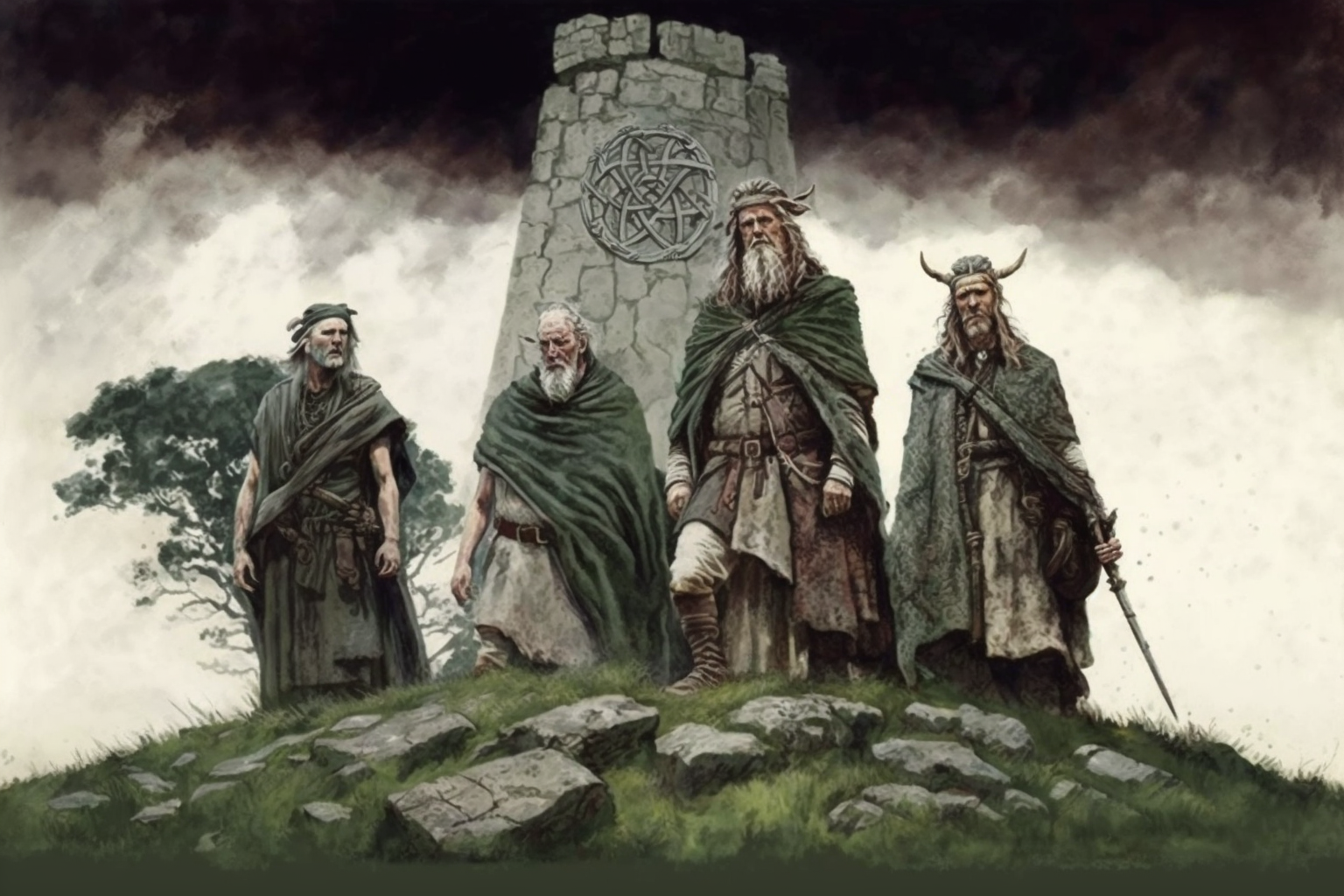The mythology of ancient Ireland is rich and varied, with a host of deities and legends that have been passed down through the centuries. One of the most important sites in Irish mythology is the Hill of Tara, located in County Meath, which served as the ceremonial and burial site of ancient Irish kings. In this blog post, we’ll explore the mythology and deities associated with the Hill of Tara and ancient Ireland.

The Hill of Tara is associated with a number of important Irish deities. One of the most significant is Lugh of the Long Arm, a member of the Tuatha Dé Danann who was known for his many skills and talents. Lugh was said to have established the festival of Lughnasadh, which celebrated the harvest and the changing of the seasons. According to legend, Lugh also defeated the Fomorians, a group of monstrous beings who threatened the land of Ireland [2]. Another important figure in Irish mythology is the goddess Tea, after whom the Hill of Tara is said to be named. Tea was associated with sovereignty and fertility, and she was said to have been the wife of Eremon, one of the early legendary kings of Ireland. Tea was also associated with the goddess Danu, who was seen as the mother goddess of the Tuatha Dé Danann [2].
In addition to Lugh and Tea, the Hill of Tara is also associated with a number of other important deities. One of these is Queen Maeve, a goddess who was associated with the land and the landscape. According to legend, Maeve was responsible for the fertility of the land and the prosperity of the people. Maeve was also known for her strength and her ability to command armies, and she played a significant role in the Táin Bó Cúailnge, an epic Irish tale that tells the story of the cattle raid of Cooley [2].
The mythology of ancient Ireland also includes a host of other gods and goddesses, many of whom were associated with the natural world. One of the most important of these is the Dagda, a father god who was associated with abundance and prosperity. The Dagda was said to have been able to control the weather and to provide food and sustenance to the people of Ireland. Another important deity was Brigid, a goddess of healing and poetry who was associated with the spring and the changing of the seasons [1].
The mythology of ancient Ireland also includes a host of other legendary figures, including heroes and warriors who were said to have performed great feats of strength and bravery. One of the most famous of these is Cú Chulainn, a warrior who was known for his great strength and his ability to take on multiple opponents at once. Cú Chulainn was also associated with a number of magical weapons, including the Gáe Bulg, a spear that was said to have been able to pierce any armor [1].
Sources
[1] Wikipedia contributors. (2022, February 7). Irish mythology. In Wikipedia, The Free Encyclopedia. Retrieved February 22, 2023, from https://en.wikipedia.org/wiki/Irish_mythology.
[2] Carrowkeel Megalithic Tombs. (n.d.). The mythology of Tara. Retrieved February 22, 2023, from http://www.carrowkeel.com/sites/tara/tara2.html.

